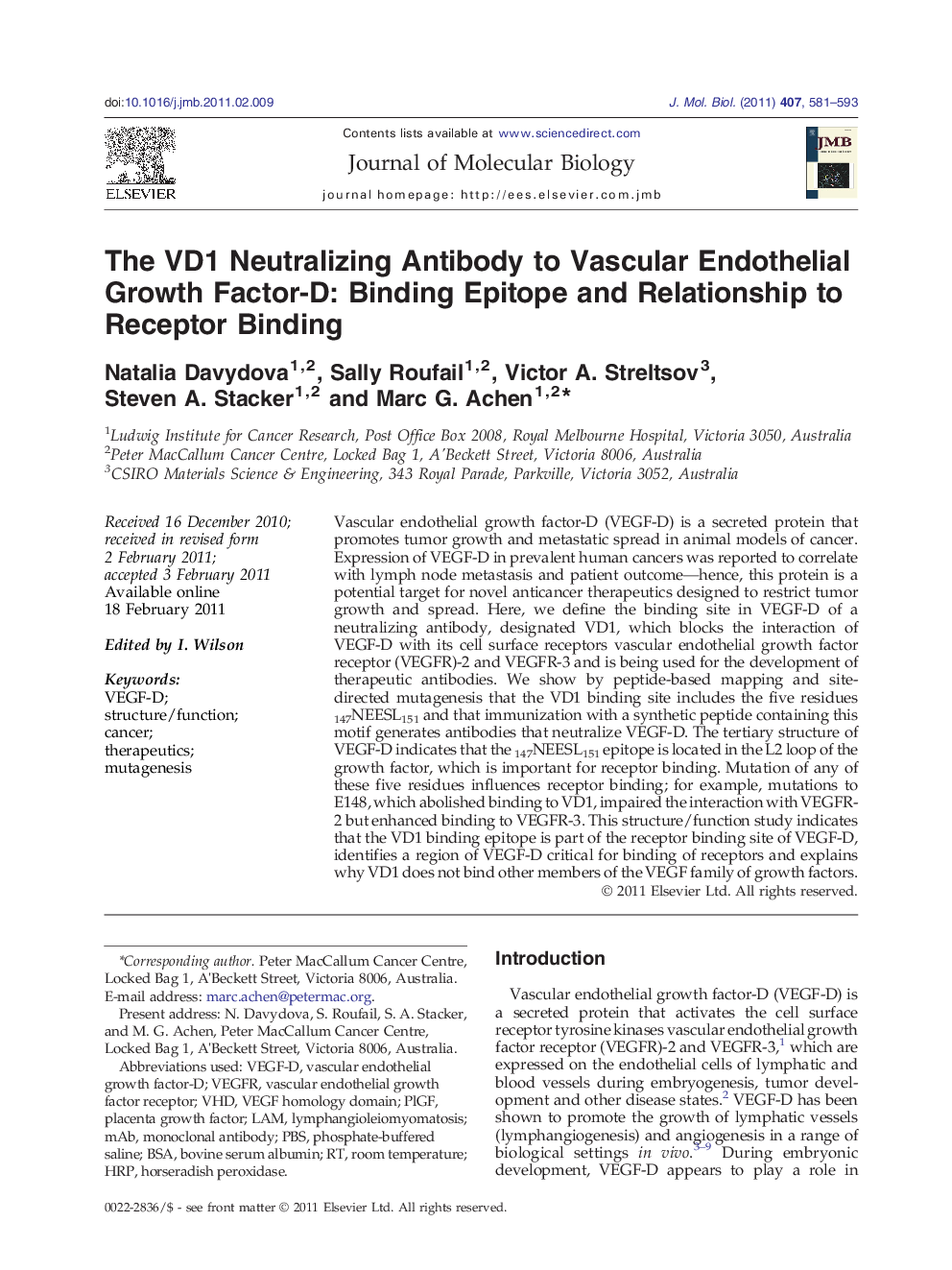| Article ID | Journal | Published Year | Pages | File Type |
|---|---|---|---|---|
| 2185609 | Journal of Molecular Biology | 2011 | 13 Pages |
Vascular endothelial growth factor-D (VEGF-D) is a secreted protein that promotes tumor growth and metastatic spread in animal models of cancer. Expression of VEGF-D in prevalent human cancers was reported to correlate with lymph node metastasis and patient outcome—hence, this protein is a potential target for novel anticancer therapeutics designed to restrict tumor growth and spread. Here, we define the binding site in VEGF-D of a neutralizing antibody, designated VD1, which blocks the interaction of VEGF-D with its cell surface receptors vascular endothelial growth factor receptor (VEGFR)-2 and VEGFR-3 and is being used for the development of therapeutic antibodies. We show by peptide-based mapping and site-directed mutagenesis that the VD1 binding site includes the five residues 147NEESL151 and that immunization with a synthetic peptide containing this motif generates antibodies that neutralize VEGF-D. The tertiary structure of VEGF-D indicates that the 147NEESL151 epitope is located in the L2 loop of the growth factor, which is important for receptor binding. Mutation of any of these five residues influences receptor binding; for example, mutations to E148, which abolished binding to VD1, impaired the interaction with VEGFR-2 but enhanced binding to VEGFR-3. This structure/function study indicates that the VD1 binding epitope is part of the receptor binding site of VEGF-D, identifies a region of VEGF-D critical for binding of receptors and explains why VD1 does not bind other members of the VEGF family of growth factors.
Graphical AbstractFigure optionsDownload full-size imageDownload high-quality image (221 K)Download as PowerPoint slideResearch Highlights► The anti-metastatic antibody VD1 binds 147NEESL151 in the L2 loop of VEGF-D. ► NEESL is involved in binding of the angiogenic/lymphangiogenic receptors VEGFR-2 and VEGFR-3. ► The L2 loop is a key target for generating VEGF-D antibodies for treatment of cancer. ► Structural analysis explains why VD1 does not bind other VEGF family members.
